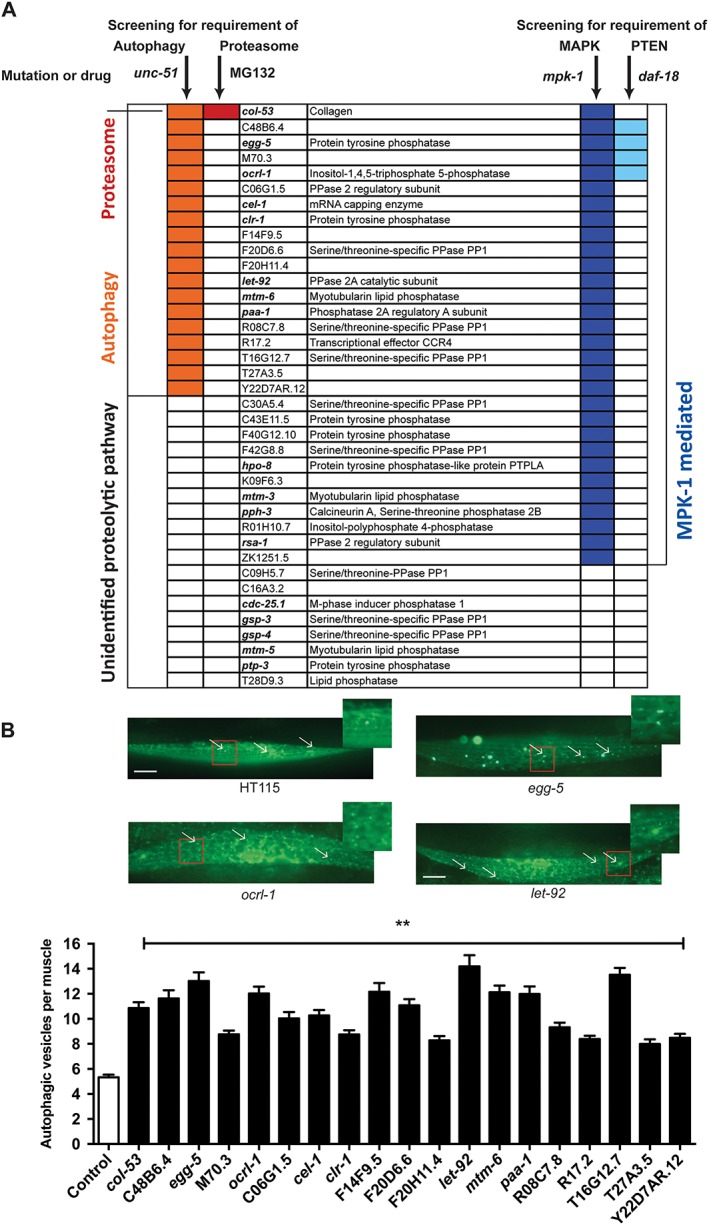Figure 5.

Autophagy is the most commonly triggered type of protein degradation in response to knockdown of a phosphatase. (A) Phosphatase‐encoding genes for which knockdown produced protein degradation were clustered into known proteolytic pathways and signalling mechanisms utilizing the same protocol as for the kinome requirement of a muscle.20 Briefly, knockdowns were examined for suppression of degradation in an autophagy mutant (unc‐51), in wild‐type animals treated with proteasome inhibitor (MG132), in a fibroblast‐growth factor pathway mutant (mpk‐1), and in an insulin‐growth factor pathway mutant (daf‐18). Colored boxes represent suppression of degradation in the mutant or treatment indicated at the top of the column. (B) Autophagic vesicles in muscle were assessed in untreated or phosphatase RNA interference‐treated animals as previously described for the kinome.20 Briefly, GFP::LGG‐1 containing worms we treated with empty vector or indicated phosphatase RNA interference and vesicles were counted. Top: sample images of empty vector control (top left) or RNA interference‐treated animal (top right and bottom left and right); white scale bars represent 20 μm. Bottom: quantification of three independent experiments (n = 20 each). Error bars indicate standard error of measurement. **P < 0.0001, one way ANOVA (graph pad prism).
